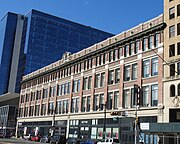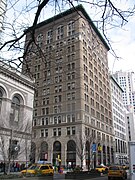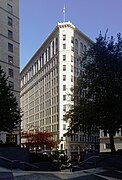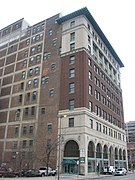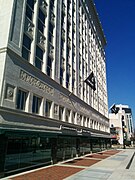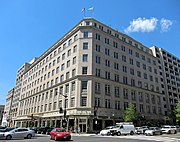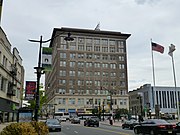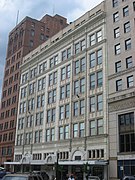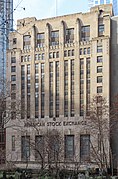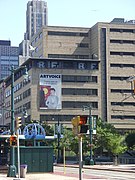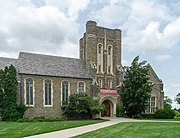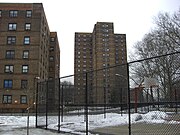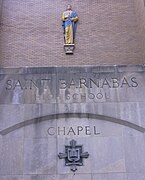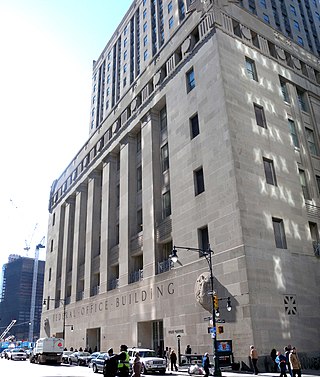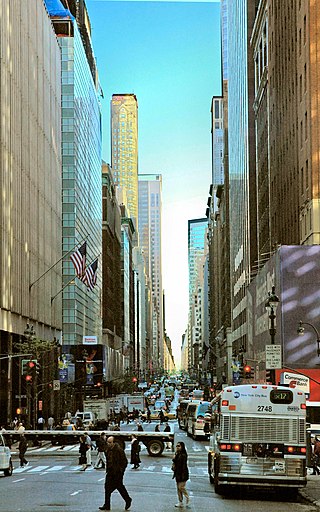
Madison Avenue is a north-south avenue in the borough of Manhattan in New York City, United States, that carries northbound one-way traffic. It runs from Madison Square to meet the southbound Harlem River Drive at 142nd Street, passing through Midtown, the Upper East Side, East Harlem, and Harlem. It is named after and arises from Madison Square, which is itself named after James Madison, the fourth President of the United States.

The Financial District of Lower Manhattan, also known as FiDi, is a neighborhood located on the southern tip of Manhattan in New York City. It is bounded by the West Side Highway on the west, Chambers Street and City Hall Park on the north, Brooklyn Bridge on the northeast, the East River to the southeast, and South Ferry and the Battery on the south.

Gimbel Brothers was an American department store corporation that operated for over a century, from 1842 until 1987. Gimbel patriarch Adam Gimbel opened his first store in Vincennes, Indiana, in 1842. In 1887, the company moved its operations to the Gimbel Brothers Department Store in Milwaukee, Wisconsin. It became a chain when it opened a second, larger store in Philadelphia, Pennsylvania, in 1894, moving its headquarters there. At the urging of future company president Bernard Gimbel, grandson of the founder, the company expanded to New York City in 1910.

Lexington Avenue, often colloquially abbreviated as "Lex", is an avenue on the East Side of Manhattan in New York City. The avenue carries southbound one-way traffic from East 131st Street to Gramercy Park at East 21st Street. Along its 5.5-mile (8.9-kilometer), 110-block route, Lexington Avenue runs through Harlem, Carnegie Hill, the Upper East Side, Midtown, and Murray Hill to a point of origin that is centered on Gramercy Park. South of Gramercy Park, the axis continues as Irving Place from 20th Street to East 14th Street.

Marymount School of New York is an American college preparatory, independent, Catholic day school for girls located on the Upper East Side of the Manhattan borough of New York City, New York.
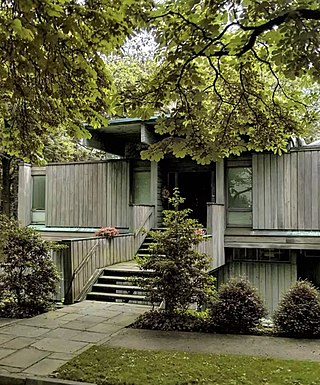
Ferdinand Gottlieb was a New York-based architect. He headed his own firm, Ferdinand Gottlieb & Associates, based in Dobbs Ferry (1961–2007).
Miller's Department Store was a chain of department stores based in East Tennessee.

Garfinckel's was a prominent department store chain based in Washington, D.C. that catered to a clientele of wealthy consumers. Its flagship store at 14th and F in the city's F Street shopping district is listed on the National Register. It filed for Chapter 11 bankruptcy in June 1990 and ceased operations that year.

Hahne & Company, commonly known as Hahne's, was a department store chain based in Newark, New Jersey. The chain had stores located throughout the central and northern areas of New Jersey.

Dunleath Historic District is a neighborhood in the northeast section of the United States city of Greensboro, North Carolina. The Dunleath Historic District was named for the mansion, no longer existing, of Robert Dick, an early resident of the neighborhood. Denleath consists of many late nineteenth and early twentieth century residences and composes one of three historic districts in Greensboro. Dunleath was formerly named the Charles B. Aycock Historic District, but the name was changed in 2017. The name of a middle school in Dunleath was changed from Aycock to Swann.
The J. N. Adam & Co., commonly referred to as J. N.'s, was a department store located in Buffalo, New York that became part of the Associated Dry Goods Corporation.

The Everett Building is a 16-story commercial structure at 200 Park Avenue South at the northwest corner with East 17th Street, on Union Square in Manhattan, New York. It was designed by the architectural firm of Starrett & van Vleck and opened in 1908. Goldwin Starrett, the lead architect, had worked for Daniel Burnham for four years in Chicago, and as such the building reflects Burnham's functionalist philosophy. It marked the development of fireproof commercial skyscrapers with open plan interiors and simple, classical exteriors.
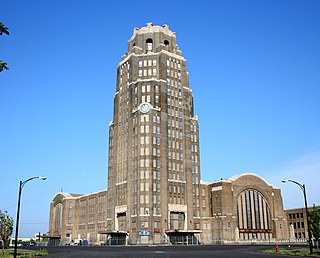
Alfred T. Fellheimer was an American architect. He began his career with Reed & Stem, where he was lead architect for Grand Central Terminal. Beginning in 1928, his firm Fellheimer & Wagner designed Cincinnati Union Terminal.

Palazzo style refers to an architectural style of the 19th and 20th centuries based upon the palazzi (palaces) built by wealthy families of the Italian Renaissance. The term refers to the general shape, proportion and a cluster of characteristics, rather than a specific design; hence it is applied to buildings spanning a period of nearly two hundred years, regardless of date, provided they are a symmetrical, corniced, basemented and with neat rows of windows. "Palazzo style" buildings of the 19th century are sometimes referred to as being of Italianate architecture, but this term is also applied to a much more ornate style, particularly of residences and public buildings.

Thompson–Starrett Co. was an American construction contracting and engineering firm based in New York City that operated from 1899 until 1968.

The Lord & Taylor Building is an 11-story commercial building in Midtown Manhattan, New York City, that formerly served as Lord & Taylor's flagship department store in the city. Designed by Starrett & van Vleck in the Italian Renaissance Revival style, it is at 424–434 Fifth Avenue between 38th and 39th Streets.

The Heinz 57 Center is an office building in Pittsburgh, Pennsylvania at the corner of Sixth and Smithfield Avenues. The building has approximately 790,000 square feet (73,000 m2), standing 13 stories tall.

200 Peachtree is a mixed-use retail center in downtown Atlanta, Georgia designed by Philip T. Shutze and Starrett & van Vleck. Built in 1927 as the flagship department store for Davison's, the last department store in the building closed in 2003. The building later underwent an extensive renovation in the 2010s.
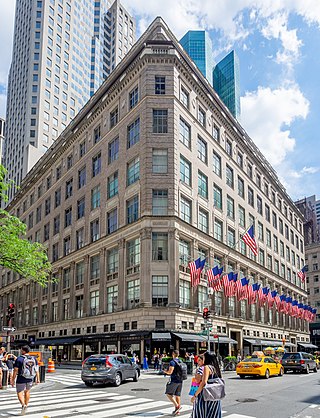
The Saks Fifth Avenue flagship store is a department store in Midtown Manhattan, New York City on Fifth Avenue between 49th and 50th Streets. The original 10-story structure at 611 Fifth Avenue has served as the flagship store of Saks Fifth Avenue since its completion in 1924. The store also occupies part of 623 Fifth Avenue, a 36-story tower completed in 1990.


